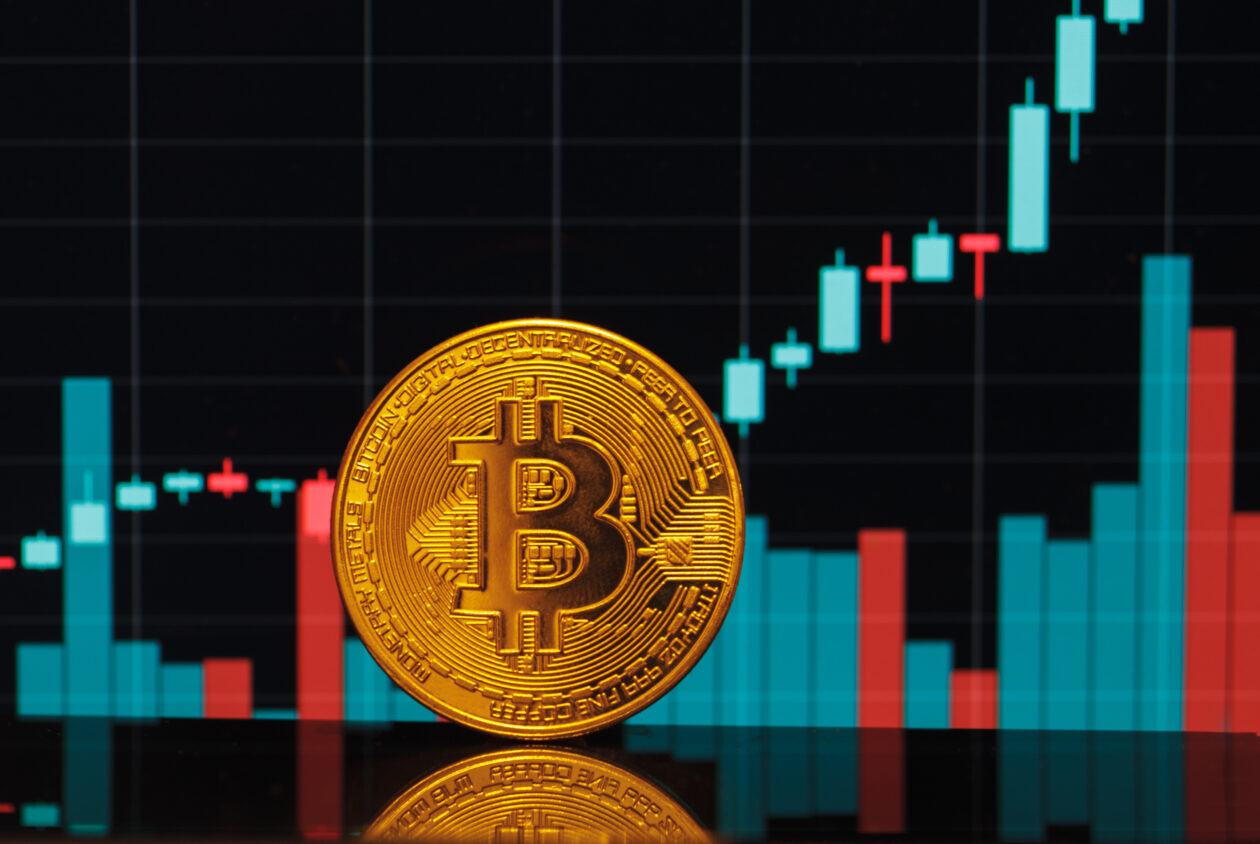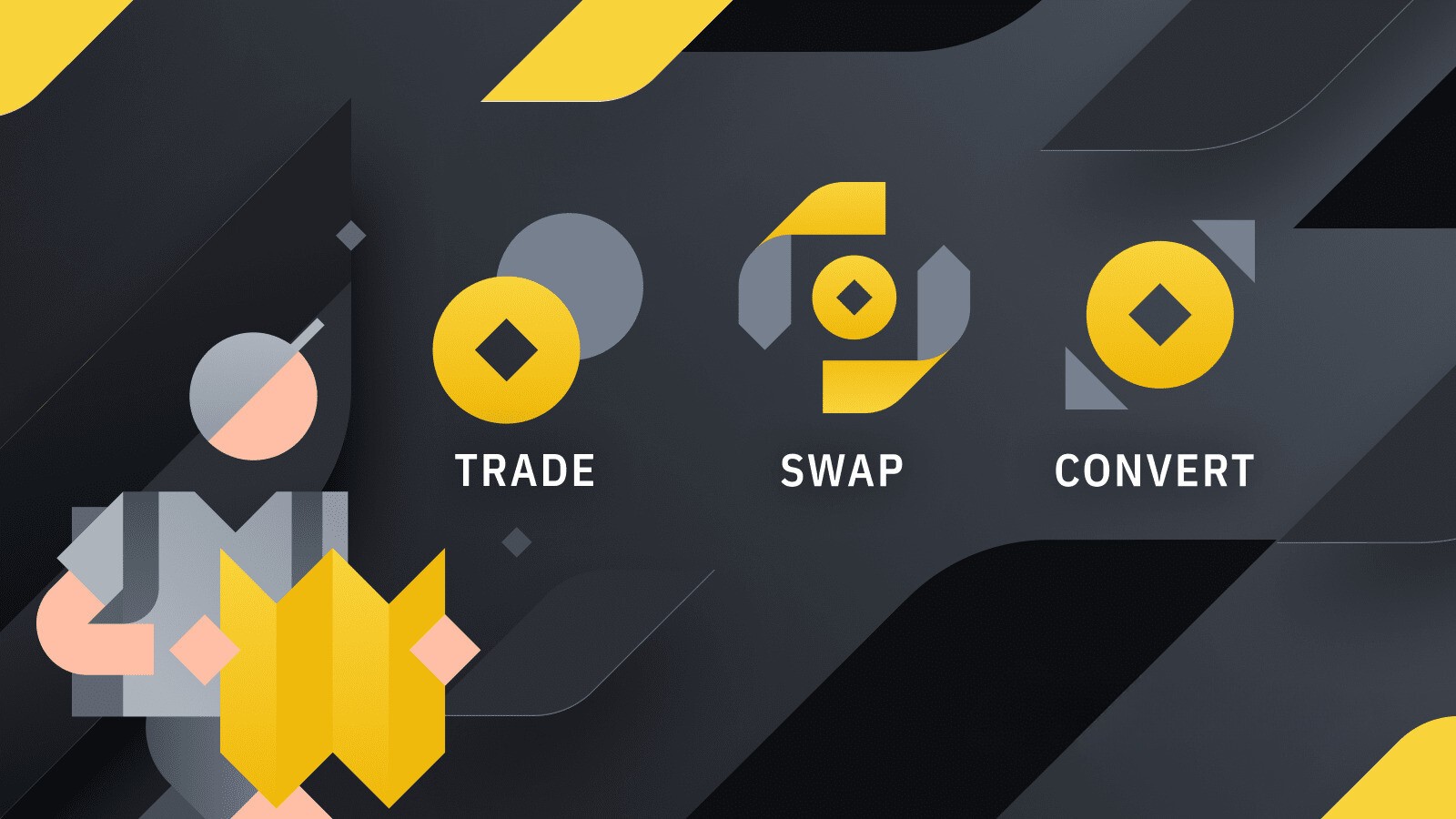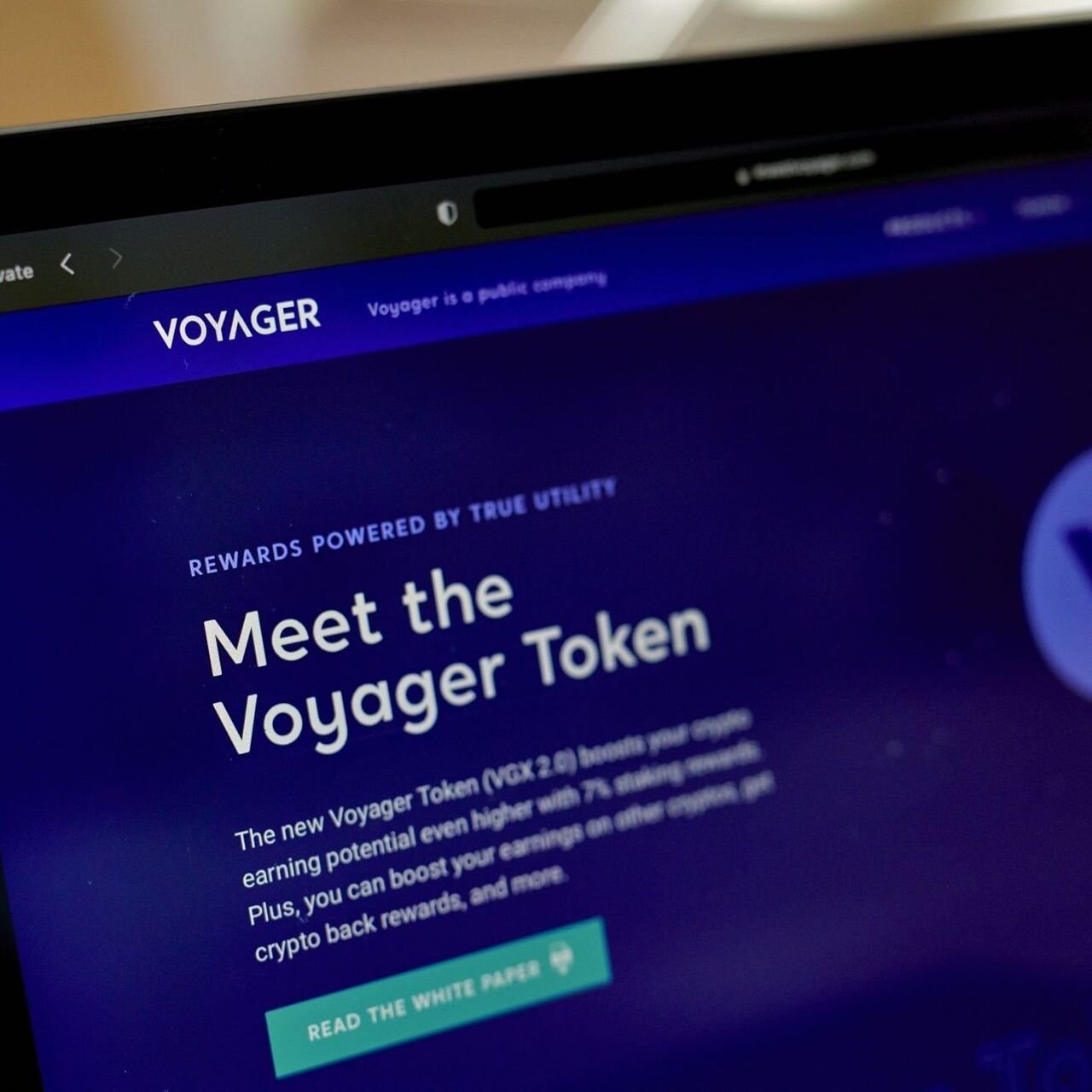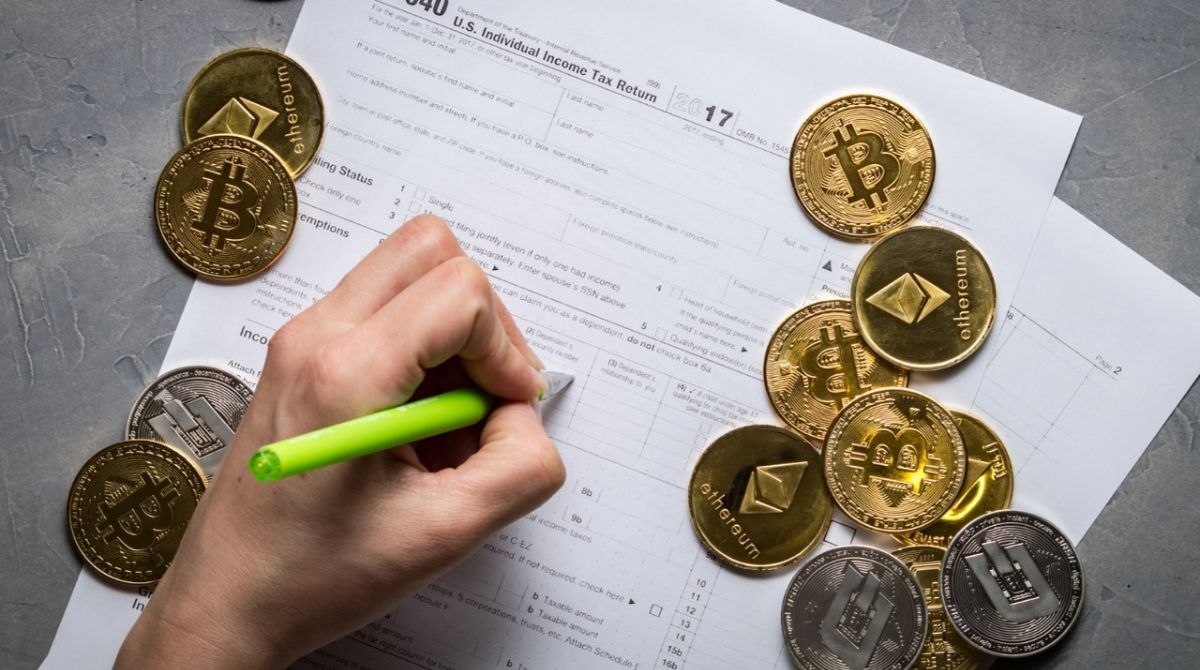Introduction
Cryptocurrencies have emerged as a popular investment asset class, offering decentralized and secure transactions. However, the inherent nature of cryptocurrencies can sometimes pose limitations when it comes to their utility in certain applications. This is where wrapped cryptocurrencies come into play.
Wrapped crypto, also known as wrapped tokens or wrapped assets, provide a solution to the challenges faced by cryptocurrencies. They essentially represent traditional assets, such as fiat currencies or other cryptocurrencies, in a tokenized form that can be utilized on blockchain networks. By “wrapping” these assets, they become compatible with smart contracts and decentralized applications (dApps), enabling seamless interoperability in the crypto world.
The concept of wrapping an asset involves locking the original asset in a custodial account and issuing a corresponding wrapped token on the blockchain. This token, which is now a representation of the underlying asset, can be freely traded, stored, and utilized within the blockchain ecosystem. This process is typically carried out by trusted third-party custodians or decentralized protocols, ensuring the security and integrity of the wrapped tokens.
Wrapped crypto assets operate on various blockchain networks, including Ethereum, Binance Smart Chain, and others. They offer the benefits of both traditional assets and decentralized cryptocurrencies, combining the stability and familiarity of traditional assets with the transparency and efficiency of blockchain technology.
One of the key advantages of wrapped crypto is the ability to leverage the functionality of the underlying blockchain network while still maintaining exposure to the value of the wrapped asset. For example, wrapped Bitcoin (WBTC) allows Bitcoin holders to utilize their Bitcoin holdings in decentralized finance (DeFi) applications, where Bitcoin itself is not natively supported. This bridges the gap between the traditional financial world and the decentralized crypto ecosystem.
Furthermore, wrapped crypto assets enable easier cross-chain transactions and interoperability between different blockchain networks. Users can easily transfer value between different platforms without the need for complex bridges or exchanges. This opens up new possibilities for liquidity provision, decentralized exchanges, and decentralized borrowing and lending platforms.
However, it is important to consider certain risks and considerations associated with wrapped cryptocurrencies, including the need to trust the third-party custodial services, potential regulatory risks, and the possibility of contract vulnerabilities. It is crucial to conduct thorough research and due diligence before engaging with wrapped crypto assets.
What is a Wrapped Crypto?
A wrapped crypto, also known as a wrapped token or wrapped asset, is a digital representation of an underlying asset, such as a fiat currency or another cryptocurrency, that is brought onto a blockchain network. It essentially “wraps” the original asset in a tokenized form, enabling it to be traded and utilized within the blockchain ecosystem.
The process of wrapping a crypto typically involves locking the original asset in a custodial account and issuing an equivalent amount of wrapped tokens on the blockchain. These tokens are then backed by the locked asset, ensuring that their value is pegged to the value of the underlying asset. This allows users to benefit from the features and advantages of blockchain technology while still having exposure to traditional assets.
Wrapped cryptos operate on various blockchain networks, with Ethereum being one of the most popular platforms for their issuance. Through the utilization of smart contracts, wrapped tokens can be easily created, tracked, and transferred on the blockchain.
One of the primary motivations behind the creation of wrapped cryptos is to enable the seamless integration of traditional financial systems with decentralized applications (dApps) and smart contracts. By wrapping assets such as fiat currencies, investors can leverage the benefits of blockchain technology, including transparency, immutability, and efficiency, without completely abandoning traditional financial systems.
Furthermore, wrapped cryptos can address the issue of liquidity and accessibility for certain assets that may not be readily available on blockchain networks. For example, Bitcoin is not natively supported on the Ethereum network, but by creating a wrapped version of Bitcoin (WBTC), users can now utilize their Bitcoin holdings within various Ethereum-based dApps and DeFi protocols.
Wrapped cryptos also provide a layer of interoperability between different blockchain networks. They act as bridges, enabling the transfer of value between disparate platforms without the need for complex and time-consuming processes. This fosters a more connected and fluid ecosystem, allowing users to take advantage of different blockchain networks and their unique features.
It is worth noting that the trustworthiness of the custodian or third-party entity responsible for the custody and management of the underlying assets is of utmost importance when dealing with wrapped cryptos. Users must also consider the regulatory implications and potential risks associated with these assets before engaging in any transactions or investments.
How does it work?
Wrapped crypto operates through a process of tokenization and custodial management. When a user wants to convert a traditional asset into a wrapped token, the process typically involves the following steps:
- Custodial Lock-In: The user sends their traditional asset, such as fiat currency or another cryptocurrency, to a trusted custodian. The custodian verifies the asset and locks it in a secure account.
- Token Issuance: Once the asset is verified and locked, an equivalent number of wrapped tokens are minted and issued on the desired blockchain network. These wrapped tokens represent the value of the underlying asset and are backed by it.
- Smart Contract Integration: Smart contracts are utilized to govern the issuance, tracking, and functionality of the wrapped tokens. These contracts ensure transparency, immutability, and efficient management of the tokens.
- Token Utilization: With the wrapped tokens in hand, users can now utilize them within the blockchain ecosystem. They can trade the tokens on decentralized exchanges, participate in lending and borrowing protocols, provide liquidity in automated market makers (AMMs), or even use them as collateral for decentralized loans.
- Redemption: When a user wants to convert their wrapped tokens back into the original asset, the process operates in reverse. The user sends their wrapped tokens to a custodian, who then verifies the tokens and releases the corresponding asset from the custodial account.
The custodial aspect of wrapped crypto is crucial as it ensures the value and security of the underlying assets. Custodians are responsible for safeguarding the assets and maintaining transparency in the tokenization process. They play a crucial role in building trust among users who are looking to venture into the world of wrapped tokens.
It is important to note that wrapped crypto assets require a level of trust, as users are relying on custodial services to manage and secure the underlying assets. However, some projects have also explored the concept of decentralized custodianship, where custodial functions are executed by smart contracts and distributed networks, reducing reliance on centralized entities.
Overall, the process of wrapping assets into crypto tokens enables greater accessibility, liquidity, and interoperability within the blockchain ecosystem. It bridges the gap between traditional finance and decentralized applications, opening up new opportunities and possibilities for users and developers in the crypto space.
Advantages of Wrapped Crypto
Wrapped crypto assets offer several advantages that make them an attractive option for users in the blockchain ecosystem. Let’s explore some of these advantages:
- Interoperability: One major advantage of wrapped crypto assets is their ability to facilitate interoperability between different blockchain networks. By tokenizing traditional assets, such as fiat currencies or other cryptocurrencies, and bringing them onto a specific blockchain, users can now seamlessly transfer value between different platforms without relying on centralized exchanges or complex processes.
- Accessibility: Wrapped crypto assets enable greater accessibility to traditional financial assets within the decentralized crypto space. For example, by wrapping Bitcoin, which is not natively supported on certain blockchain networks, users can now leverage their Bitcoin holdings in decentralized applications and decentralized finance (DeFi) protocols. This expands the utility and potential use cases for various assets.
- Liquidity: Wrapped crypto assets enhance liquidity for traditionally illiquid assets in the decentralized finance space. By tokenizing and creating tradable wrapped tokens, users can easily buy, sell, and trade these assets on decentralized exchanges and automated market makers. This increases the efficiency and accessibility of liquidity provision in the crypto ecosystem.
- Smart Contract Integration: Wrapped crypto assets integrate seamlessly with smart contracts and decentralized applications. As they operate on blockchain networks, they can be utilized within various decentralized finance (DeFi) protocols, lending and borrowing platforms, decentralized exchanges, and more. This opens up a wide range of opportunities for users to interact with and benefit from the capabilities of smart contracts.
- Stability: While cryptocurrency prices can be highly volatile, wrapped crypto assets provide users with exposure to the value of traditional assets, such as fiat currencies. This stability helps users navigate the cryptocurrency market while still being able to utilize blockchain technology for their financial needs.
- Transparency and Security: Wrapped crypto assets operate on blockchain networks, offering transparency in transactions and the ability to verify ownership and asset movements. Additionally, custodial services play a crucial role in ensuring the security and integrity of the underlying assets. Users can have greater confidence in the security of their investments with trusted custodians who manage and safeguard the wrapped assets.
These advantages make wrapped crypto assets a valuable addition to the ecosystem, offering users the benefits of both traditional and decentralized financial systems. By combining the familiarity and stability of traditional assets with the efficiency and transparency of blockchain technology, wrapped crypto assets unlock new possibilities for individuals and businesses in the crypto space.
Disadvantages of Wrapped Crypto
While wrapped crypto assets offer numerous benefits, it is important to consider the potential drawbacks and limitations associated with them. Here are some of the disadvantages of wrapped crypto:
- Trust in Custodians: Wrapped crypto assets rely on custodians to manage and secure the underlying assets. Users must trust the custodial services to fulfill their obligations and protect the assets from loss or theft. This introduces a level of centralization, which goes against the decentralized nature of blockchain technology.
- Regulatory Risks: The regulatory landscape for wrapped crypto assets is still evolving. Different jurisdictions may have different interpretations of these assets, which could lead to regulatory uncertainties. Users should be aware of the potential risks and legal considerations associated with wrapped crypto assets in their respective jurisdictions.
- Dependency on Third Parties: The process of wrapping assets requires users to rely on third-party custodians. This dependency introduces counterparty risk, as users must trust the custodian to successfully issue and redeem the corresponding wrapped tokens. Any issues or failures on the custodian’s part could impact the liquidity and accessibility of the wrapped crypto assets.
- Contract Vulnerabilities: As with any smart contract-based system, there is always a risk of vulnerabilities and exploits. Issues in the smart contracts governing the wrapped tokens could lead to potential security breaches and financial loss. It is important for users to perform their due diligence and carefully assess the security measures and audits conducted on the smart contracts before engaging with wrapped crypto assets.
- Centralization of Governance: In some cases, wrapped crypto assets may rely on centralized governance mechanisms to make key decisions. This centralization could introduce concerns regarding censorship, control, and the ability to modify or manipulate the wrapped tokens. Users should consider the governance structure and decision-making processes of the wrapped asset project before investing in or utilizing the tokens.
These disadvantages highlight the need for careful consideration and analysis when dealing with wrapped crypto assets. While they offer benefits such as liquidity, accessibility, and interoperability, users should be aware of the potential risks involved. It is essential to conduct thorough research, assess the credibility of custodians, and stay informed about regulatory developments to make informed decisions in the wrapped crypto asset space.
Popular Examples of Wrapped Crypto
The concept of wrapping assets has gained significant traction in the blockchain space, leading to the creation of several popular wrapped crypto assets. Here are some of the notable examples:
- Wrapped Bitcoin (WBTC): WBTC is one of the most prominent wrapped crypto assets. It represents Bitcoin (BTC) in a tokenized form on the Ethereum blockchain. WBTC allows users to leverage their Bitcoin holdings within the Ethereum ecosystem, accessing decentralized applications (dApps) and decentralized finance (DeFi) protocols that would otherwise not support Bitcoin natively.
- Wrapped Ether (WETH): WETH is another widely recognized wrapped crypto asset. It represents Ethereum (ETH) in a tokenized form, enabling greater liquidity and accessibility for Ether holders within the Ethereum network. WETH is commonly used as a base token for trading pairs on decentralized exchanges and as collateral in DeFi protocols.
- Wrapped Litecoin (WLTC): WLTC is a wrapped version of Litecoin (LTC) that operates on the Ethereum network. Similar to WBTC and WETH, WLTC allows Litecoin holders to utilize their holdings in Ethereum-based DeFi protocols and other Ethereum applications.
- Wrapped Zcash (WZEC): WZEC is a wrapped version of Zcash (ZEC) that brings Zcash’s privacy features to the Ethereum network. By wrapping ZEC, users can interact with Ethereum-based applications while benefitting from the anonymity and privacy offered by Zcash’s shielding technology.
- Wrapped Cardano (WCARDANO): WCARDANO is a wrapped token built on the Cardano blockchain. It represents Cardano’s native ADA cryptocurrency in a tokenized form, opening up opportunities for ADA holders to participate in DeFi protocols and other Ethereum-compatible applications.
These examples are just a few of the many wrapped crypto assets available in the market. It is important to note that each wrapped asset operates on a specific blockchain network and might have different custodians and governance structures. Users should conduct thorough research and due diligence before engaging with any specific wrapped asset to ensure they understand the associated risks, mechanics, and potential benefits.
Use Cases of Wrapped Crypto
Wrapped crypto assets have a wide range of use cases that leverage the benefits of blockchain technology while bridging the gap between traditional and decentralized finance. Here are some of the key use cases of wrapped crypto:
- Decentralized Finance (DeFi): Wrapped crypto assets play a significant role in the rapidly growing field of decentralized finance. They enable users to utilize their holdings in various DeFi protocols, such as lending and borrowing platforms, decentralized exchanges, yield farming, and liquidity provision. By wrapping assets like Bitcoin or Ethereum, users gain access to a host of financial services and opportunities within the decentralized ecosystem.
- Cross-Chain Interoperability: Wrapped crypto assets facilitate cross-chain interoperability, allowing users to transfer value between different blockchain networks. They act as bridges, enabling assets to be transferred seamlessly without relying on centralized exchanges or complicated processes. This enhances liquidity provision, trading opportunities, and asset utilization across multiple platforms.
- Enhanced Liquidity: By wrapping traditionally illiquid assets, wrapped crypto assets enhance liquidity in the market. Tokens backed by assets like fiat currencies or real-world commodities can now be freely traded on decentralized exchanges, providing investors with more opportunities for buying and selling, as well as participating in various market-making strategies.
- Cross-Border Payments: Wrapped crypto assets can facilitate faster, more secure, and cost-effective cross-border payments. By tokenizing traditional currencies, users can avoid the need for intermediaries and complicated payment networks, reducing fees and transaction times. It enables individuals and businesses to take advantage of the speed and efficiency of blockchain technology while benefiting from traditional currencies’ stability and familiarity.
- Asset Digitization: Wrapped crypto assets contribute to the digitization and tokenization of real-world assets. Physical assets such as real estate, art, collectibles, and other forms of ownership rights can be represented as wrapped tokens on blockchain networks. This allows for fractional ownership, easier transferability, and increased accessibility to a wider range of investors.
These are just a few examples of the versatile use cases enabled by wrapped crypto assets. As the blockchain industry continues to evolve, the range of applications for wrapped crypto is likely to expand, fostering innovation and driving increased adoption of decentralized technologies in traditional finance.
How to Acquire Wrapped Crypto
Acquiring wrapped crypto assets involves a few straightforward steps. Here is a general guide on how to acquire wrapped crypto:
- Choose a Decentralized Exchange (DEX) or Platform: Select a reputable decentralized exchange or platform that supports the wrapped crypto asset you wish to acquire. Popular decentralized exchanges include Uniswap, SushiSwap, and PancakeSwap.
- Create a Wallet: Set up a compatible cryptocurrency wallet that supports the blockchain network on which the wrapped asset operates. For example, if you want to acquire a wrapped asset on the Ethereum network, you can use wallets like MetaMask or MyEtherWallet.
- Connect Your Wallet to the DEX: Connect your wallet to the decentralized exchange or platform you’ve chosen. This allows you to interact with the DEX and execute trades.
- Deposit Your Original Asset: Deposit the original asset you wish to wrap into your connected wallet. Follow the instructions provided by the DEX or platform to initiate the deposit process.
- Swap or Trade: After your original asset is deposited, you can swap it for the corresponding wrapped crypto asset. On the DEX, select the trading pair for the wrapped asset you want to acquire and execute the trade.
- Withdraw Your Wrapped Crypto: Once the trade is completed, you will receive the wrapped crypto asset in your connected wallet. From there, you have full control over your wrapped tokens and can manage them as desired.
It is important to note that the specific process may vary depending on the platform, blockchain, and wrapped asset you are acquiring. It is always recommended to thoroughly research and follow the instructions provided by the chosen platform or DEX.
Additionally, keep in mind that acquiring wrapped crypto assets may involve transaction fees, including gas fees on blockchain networks like Ethereum. Ensure that you have sufficient funds to cover these fees to complete the acquisition process smoothly.
Lastly, it is essential to perform due diligence and select reputable platforms and DEXs that have a track record of security and reliability. This helps protect your assets and ensures a safer and more positive experience when acquiring wrapped crypto.
Risks and Considerations of Wrapped Crypto
While wrapped crypto assets provide various benefits, it is important to be aware of the potential risks and considerations involved. Here are some key factors to consider when dealing with wrapped crypto:
- Counterparty Risk: When using wrapped crypto assets, users must trust the custodians responsible for managing the underlying assets. The reliance on custodians introduces counterparty risk, as any issues or failures on their part could impact the value, accessibility, or functionality of the wrapped tokens.
- Regulatory Environment: The regulatory landscape for wrapped crypto assets is still evolving, and different jurisdictions may have varying interpretations and approaches. Users should stay informed about the regulatory environment and compliance requirements to ensure legal compliance and mitigate potential risks.
- Smart Contract Risks: Wrapped crypto assets operate on blockchain networks and rely on smart contracts to facilitate the tokenization and management processes. However, smart contracts can have vulnerabilities that could be exploited by malicious actors. Users should evaluate the security measures and audits conducted on the smart contracts supporting wrapped crypto assets to mitigate the risk of security breaches.
- Custodial Transparency and Trustworthiness: Since wrapped crypto assets rely on custodians for asset management, it is important to assess the transparency and trustworthiness of the custodial services. Users should research the reputation, security practices, and compliance measures of the custodian before entrusting their assets.
- Market Volatility: While wrapped crypto assets may aim to represent the value of underlying assets, market conditions can still impact their prices and value. Users should be aware of the potential volatility and price fluctuations associated with both the wrapped crypto asset and the underlying asset.
- Centralization Concerns: Wrapped crypto assets may introduce centralization concerns, particularly if they rely on centralized governance mechanisms or custodial services. Users should assess the level of decentralization and governance structure of the wrapped asset project to ensure alignment with their preferences and risk tolerance.
It is essential for users to conduct thorough research, due diligence, and risk assessments before engaging with wrapped crypto assets. This includes evaluating trusted custodians, understanding the regulatory environment, and carefully reviewing smart contract security measures. By staying informed and making well-informed decisions, users can mitigate potential risks and navigate the wrapped crypto space more confidently.
Conclusion
Wrapped crypto assets have emerged as a bridge between traditional finance and the decentralized blockchain ecosystem. By tokenizing traditional assets, such as fiat currencies and other cryptocurrencies, wrapped crypto assets unlock new possibilities for liquidity, interoperability, and accessibility.
The ability to wrap assets brings numerous advantages, including interoperability between different blockchain networks, enhanced liquidity, access to decentralized finance (DeFi) protocols, and stability through exposure to traditional assets. Users can leverage the benefits of blockchain technology while still engaging with familiar financial systems.
However, there are considerations and risks associated with wrapped crypto assets. Dependence on third-party custodians, regulatory uncertainties, smart contract vulnerabilities, and centralization concerns are important factors to evaluate and mitigate. Users should conduct thorough research, trust reputable custodians, assess regulatory frameworks, and stay informed about potential risks.
Despite these challenges, wrapped crypto assets offer a compelling way to expand the use cases and functionality of digital assets. They facilitate the seamless integration of traditional assets and decentralized applications, bridging the gap between different financial systems.
As the blockchain industry continues to evolve, we can expect further innovation and growth in the wrapped crypto space. The potential applications and opportunities for wrapped assets are vast, enabling individuals and businesses to leverage the benefits of blockchain technology while building on existing financial structures.
If approached with caution and a thorough understanding of the risks involved, wrapped crypto assets have the potential to play a significant role in shaping the future of finance, driving increased adoption and opening new frontiers of possibilities for users in the blockchain ecosystem.

























